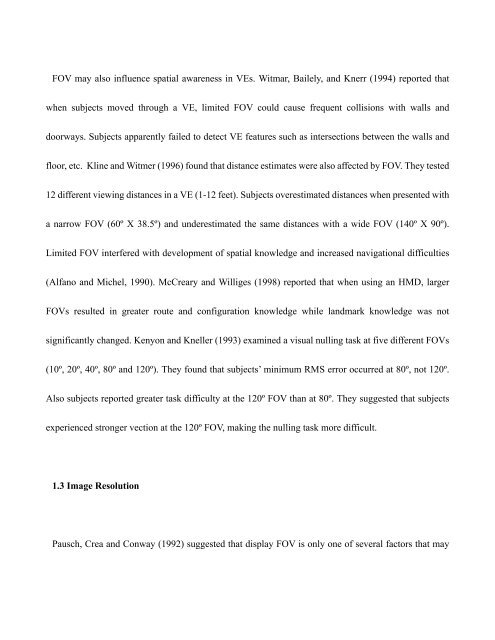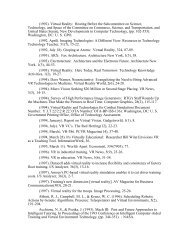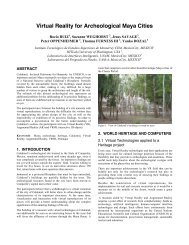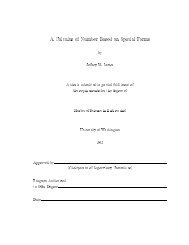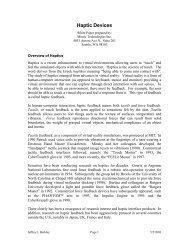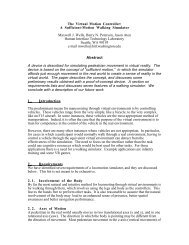Henry B - Human Interface Technology Laboratory - University of ...
Henry B - Human Interface Technology Laboratory - University of ...
Henry B - Human Interface Technology Laboratory - University of ...
Create successful ePaper yourself
Turn your PDF publications into a flip-book with our unique Google optimized e-Paper software.
FOV may also influence spatial awareness in VEs. Witmar, Bailely, and Knerr (1994) reported that<br />
when subjects moved through a VE, limited FOV could cause frequent collisions with walls and<br />
doorways. Subjects apparently failed to detect VE features such as intersections between the walls and<br />
floor, etc. Kline and Witmer (1996) found that distance estimates were also affected by FOV. They tested<br />
12 different viewing distances in a VE (1-12 feet). Subjects overestimated distances when presented with<br />
a narrow FOV (60º X 38.5º) and underestimated the same distances with a wide FOV (140º X 90º).<br />
Limited FOV interfered with development <strong>of</strong> spatial knowledge and increased navigational difficulties<br />
(Alfano and Michel, 1990). McCreary and Williges (1998) reported that when using an HMD, larger<br />
FOVs resulted in greater route and configuration knowledge while landmark knowledge was not<br />
significantly changed. Kenyon and Kneller (1993) examined a visual nulling task at five different FOVs<br />
(10º, 20º, 40º, 80º and 120º). They found that subjects’ minimum RMS error occurred at 80º, not 120º.<br />
Also subjects reported greater task difficulty at the 120º FOV than at 80º. They suggested that subjects<br />
experienced stronger vection at the 120º FOV, making the nulling task more difficult.<br />
1.3 Image Resolution<br />
Pausch, Crea and Conway (1992) suggested that display FOV is only one <strong>of</strong> several factors that may


